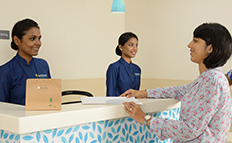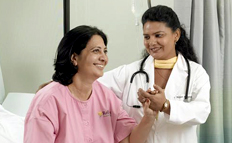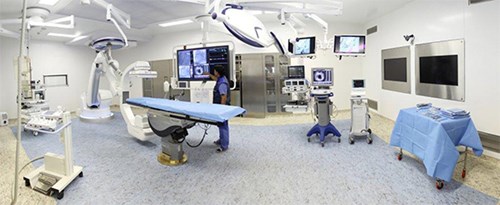Dear Guest,
We would be delighted to receive your feedback on our services.
Captcha * (case sensitive)






Nisbh vel velit auctor aliquet. Aenean sollicitudin.

Nisbh vel velit auctor aliquet. Aenean sollicitudin, lorem quis bibendum auctornisi elit consequat

Nisbh vel velit auctor aliquet. Aenean sollicitudin, lorem quis bibendum auctornisi elit consequat

Nisbh vel velit auctor aliquet. Aenean sollicitudin, lorem quis bibendum auctornisi elit consequat
Sir H. N. Reliance Foundation Hospital has the most advanced, one of its kind, state-of-the-art hybrid Cath lab in the country. It combines traditional diagnostic function of a Cath lab with the surgical functions of an operating room. Here a cardiologist, a radiologist and a surgeon work as a team and carry out complex cardiac, vascular or neurovascular procedures. It has a robotic arm for imaging with low dose radiation which can be parked away from the operating table providing extra space to the surgical team. The hybrid room is also equipped with video capability for live satellite transmissions to a conference room at the hospital, or around the world. It also has an anesthesia machine, surgical lights, an advanced 3D electrophysiology system and haemodynamic monitoring system. It is ideal for transCathter implantation of valves, endovascular repair of aorta, neuro-interventions, and hybrid procedures in congenital and ischemic heart disease.

For congenital cardiac malformations, even though surgery remains the treatment of choice, interventional cardiology approaches are increasingly being used. Various procedures like device closure of ASD, VSD, PDA and balloon valvotomies can be performed in hybrid Cath lab with very low infection rates. In complex heart disease the children may be high risk due to low weight. Combining interventions and surgery into a single therapeutic procedure potentially leads to reduction of complexity, cardiopulmonary bypass time, risk, and to improved outcomes.
Permanent pacemakers, biventricular pacemakers and implantable Cardiac defibrillators can be performed with minimal risk of infection and complications.



RELIANCE FOUNDATION HOSPITAL Free Mobile App From



Dear Guest,
We would be delighted to receive your feedback on our services.
Captcha * (case sensitive)

Nisbh vel velit auctor aliquet. Aenean sollicitudin.

Nisbh vel velit auctor aliquet. Aenean sollicitudin, lorem quis bibendum auctornisi elit consequat

Nisbh vel velit auctor aliquet. Aenean sollicitudin, lorem quis bibendum auctornisi elit consequat

Nisbh vel velit auctor aliquet. Aenean sollicitudin, lorem quis bibendum auctornisi elit consequat



